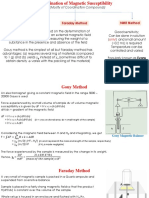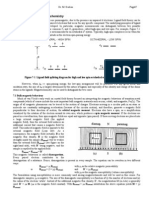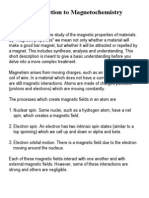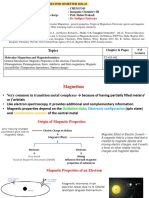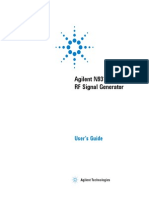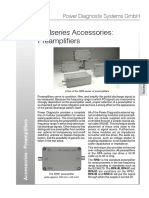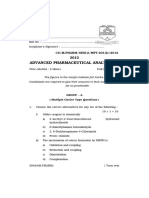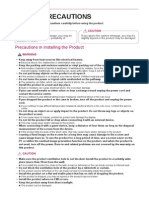0% found this document useful (0 votes)
256 views11 pagesEvans Method
The document describes the Evans method for measuring magnetic susceptibility using NMR. It involves measuring the peak separation of an NMR solvent in a capillary tube versus in a sample solution. This peak shift is then used to calculate the number of unpaired electrons in the sample based on the Curie law relationship between magnetic susceptibility and unpaired electrons. Corrections are made for diamagnetism of the solvent and sample density differences.
Uploaded by
babychannel0987Copyright
© © All Rights Reserved
We take content rights seriously. If you suspect this is your content, claim it here.
Available Formats
Download as PDF, TXT or read online on Scribd
0% found this document useful (0 votes)
256 views11 pagesEvans Method
The document describes the Evans method for measuring magnetic susceptibility using NMR. It involves measuring the peak separation of an NMR solvent in a capillary tube versus in a sample solution. This peak shift is then used to calculate the number of unpaired electrons in the sample based on the Curie law relationship between magnetic susceptibility and unpaired electrons. Corrections are made for diamagnetism of the solvent and sample density differences.
Uploaded by
babychannel0987Copyright
© © All Rights Reserved
We take content rights seriously. If you suspect this is your content, claim it here.
Available Formats
Download as PDF, TXT or read online on Scribd
/ 11
